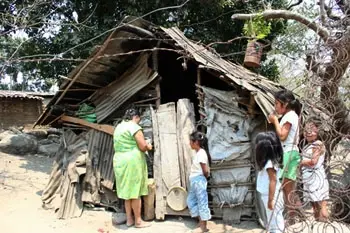Relative poverty
Relative poverty refers to a measure of poverty in which people are below a relative poverty line. Relative poverty, therefore, is established based on the general level of income in the community, the country, as well as the region being analyzed. Thus, this type of poverty quantifies, based on the existing population, a range of income, establishing the poverty level below a relative threshold that considers one part of the population poorer than another.
Thus, this measurement presents great irregularities and the inability to measure it objectively. Relative poverty, as its name indicates, can give rise to measurements that are not, in practice, real. Therefore, this type of poverty is usually less used than absolute poverty. And this offers a more reliable calculation method.
Criticisms of the concept of relative poverty
Relative poverty uses a type of measurement that does not adjust to reality. In this sense, said poverty, in a place where all citizens have a salary of 100 euros, due to the system used to measure poverty, would be non-existent. And, since everyone has the same level of income, there is no distinction that reflects the fact that there are people who are relatively poorer than others.
In the same way, suppose that we live in a city in which all citizens have income levels greater than one million euros, leaving a series of people who, for their work, receive a salary worth half a million. In this sense, if everyone had an annual income of one million euros and these others half a million, relative poverty would be found in those who receive half a million euros; despite the fact that, in real practice, there are no poor people in the territory.
Relative poverty leads us to these types of situations. And, as we see, it is impossible to take it into account for an international measurement, since said measurement, as we saw in both examples, is adjusted to the territory, so the measurement and the thresholds adopted are different.
Difference between absolute poverty and relative poverty
In order to alleviate the flaws that the measurement of relative poverty has as a measure of poverty, absolute poverty is used. This indicator, unlike relative poverty, establishes a minimum of resources to which a person must have access for the correct development of a dignified life.
However, like relative poverty, absolute poverty also has flaws. In this sense, errors that occur again depending on the place where the analysis is carried out. Absolute poverty tries to equalize poverty in the world, establishing a minimum daily income for the development of a dignified life.
Therefore, although absolute poverty, unlike relative poverty, measures poverty based on a fixed and quantified threshold, this, as is the case with relative poverty, has flaws in its measurement that prevent, once again, adopting a vision objective about poverty in the territory.

 IHRO NEWS
IHRO NEWS

